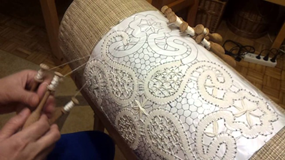Bobbin lace making is a form of textile craft. There are multiple ways to create the lace, but bobbin lace making creates the lace by crossing and weaving through the threads coiled on bobbins.

HISTORY

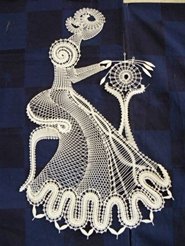
The first appearances of bobbin lace making were during the Renaissance period in Italy (approximately during the second half of 16th century). At the time, lace was quite popular as a decoration on aristocratic clothing. At first, they were embroidered and sewn.
In Czech lands, bobbin lace was popularized mostly in mountain districts. Lace was made in various areas around Ore Mountains, Orlické Mountains and the Wallachia region. Interestingly, in the year of 1564, the townspeople that were not of aristocratic heritage were forbidden from wearing lace, reserving it for higher circles only.
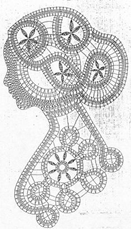
In the 17th century, most of Europe including Czech lands were at war. The Thirty Years’ War was one of the most destructive in human history and thus led to all crafts temporarily vanishing. After the war’s end, as the Baroque period arrived, the popularity of bobbin lace making skyrocketed again. In the eastern parts of Czech lands, the main district of bobbin lace came to be – Vamberecko ( in Vamberk, a lace-making school was opened in 1889 which nowadays serves as a museum dedicated to the craft). There, in the 18th and 19th century, more and more people made their living out of bobbin lace making. But as new machines were created in the 20th century, machines able to produce the lace much faster and cheaper, the craft slowly began to fade away. Fortunately, at the end of the 20th century, people started re-learning the skill when handmade lace came back into demand.
MATERIALS AND EQUIPMENT NEEDED
A bobbin pillow – a usually tube-shaped pillow (though some special flat pillows are available) filled with hay or sawdust and made from two layers of textile
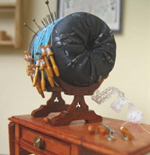
A wooden stand which you can put beneath the pillow
The bobbins – mainly two types, made from hard wood; they are usually decorated
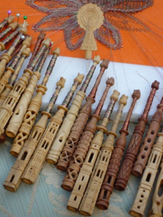
Glass head sewing pins which are needed to hold the lace during the creation process
Strong threads
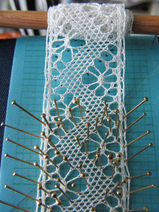
Patterns – templates of the lace, either printed or hand-drawn
